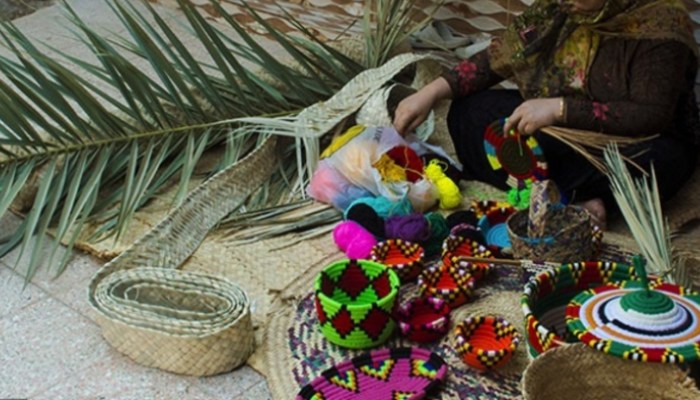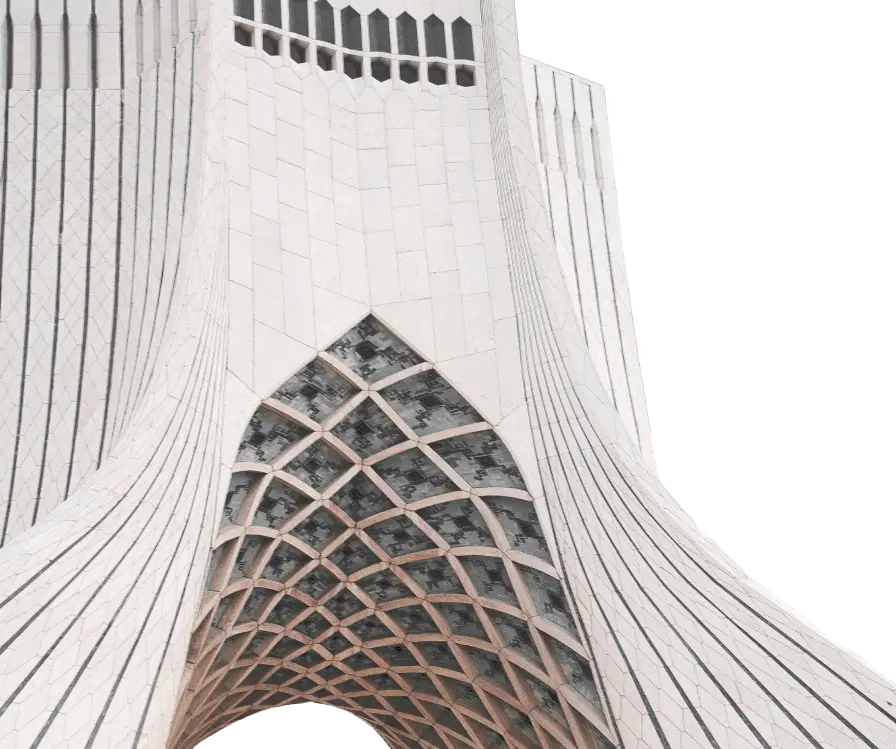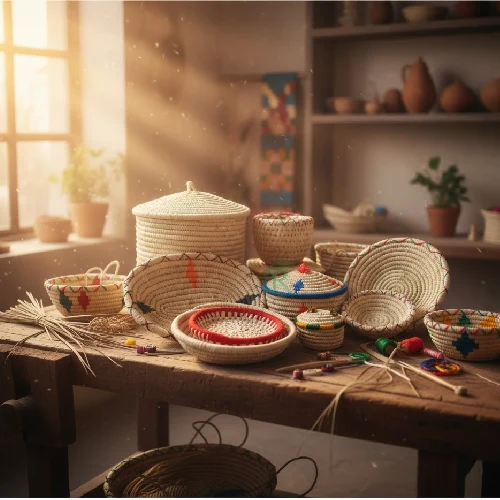Since ancient times, humans have relied on handmade products made from wicker and have engaged in wicker weaving. By utilizing the plant fibers available in their surroundings, they have created wicker containers and handicrafts that simplify their daily lives. Wicker has been used to construct various handmade items essential for everyday life and agriculture. The origins of wicker weaving date back to the emergence of civilization and humanity's need for new structures, especially those made from plant fibers. It is worth noting that mat weaving or Wicker Weaving is one of the famous handicrafts of Iran .

Materials Used in Wicker Weaving
As mentioned, these structures are created based on the plant and natural resources surrounding agricultural communities, and the type of fibers used defines the structure. For instance, if the target community is located in a garden area, thin and flexible tree branches are used, while in hot and dry regions, fibers from date palms and thin, flexible stems are utilized. Typically, these structures are crafted primarily by hand and experience, with the later introduction of tools and molds similar to those used in carpet weaving. Sometimes, the fibers are dyed naturally, or no dye is used for decoration. Materials for Wicker Weaving Include:
- Reed: Widely used in various regions of Iran for wicker weaving.
- Date Palm: In southern Iran, the leaves of date palms are used for weaving wicker.
- Wheat and Rice Stems: In some areas, wheat and rice stems are also utilized for wicker products.
- Daz: A type of plant used for wicker weaving in southern Iran.
Types of Wicker Weaving:
- Bamboo Weaving: Wicker weaving using thin and flexible bamboo sticks.
- Morava Weaving: Wicker weaving using thin and flexible sticks from a tree called Morava.
- Twig Weaving: As the name suggests, this type is produced using thin and flexible twigs.
- Kapu Weaving: In this type of wicker weaving, colored wool fibers are used to create patterns among the plant fibers.
- Pakhlu Weaving: A type of wicker weaving that utilizes fibers from the date palm.
Applications of Wicker Products
Beyond the type and use of plant fibers, wicker weaving has a wide range of applications. It is recognized as one of the most important applied arts, with most woven products serving practical purposes, while their aesthetic aspect is secondary. Wicker products are diverse and serve various functions, such as:
- Mats: Wicker is used as a mat for the floor or as a carpet in different regions.
- Containers: Baskets, bags, and various wicker containers are used for storing food and other items. Before the advent of synthetic fibers, wicker was the primary material for making containers, bags, and sometimes tables and chairs. Until recently, many people used wicker baskets for carrying items in the streets and alleys of cities and villages. Even today, in the southern regions, these baskets are used for transporting various goods like fish and grains. Interestingly, these fibers are not only resistant to intense sunlight but are also lightweight, easily accessible, recyclable, and decompose quickly in nature after their lifespan ends, returning to the environment. Additionally, producing these items with these fibers is economically beneficial in local markets, creating jobs for low-income communities and providing a thriving market for local societies. Furthermore, these containers attract the attention of both domestic and foreign tourists, creating a suitable market for international trade. This environment not only generates foreign currency but also fosters a suitable atmosphere for promoting Iranian culture abroad. It is not uncommon for a handmade item woven in traditional huts to be sold in an upscale boutique in one of the most elegant neighborhoods of Europe, providing a significant financial resource for economically disadvantaged communities in the country.
- Curtains: Wicker is used as curtains to block sunlight and create shade in hot and dry regions. The shade created is quite pleasant, and by sprinkling a little water on the wicker, a cool, refreshing atmosphere can be provided for residents during hot summers. In some cases, wicker is used to create barriers and prevent visibility into private spaces, serving as a means of privacy. The role of wicker in this regard adds a fresh touch. Sometimes, by dyeing the wicker fibers, patterns are created on the curtains, enhancing their beauty while maintaining the inherent quality of wicker.
- Hats: Wicker hats serve as protection against the scorching sun and are lightweight and aesthetically pleasing, making them suitable for work in specific environments such as farms, gardens, and workshops. If you work in extreme heat above 50 degrees Celsius in a farm, garden, or workshop, you will appreciate the value of wicker hats. These hats are not only lightweight and durable but also act as excellent insulators against the sun's rays. The lightweight and beautiful fibers of wicker prevent direct sunlight from reaching your head while allowing for proper ventilation, preventing sweating and overheating. This property of wicker fibers allows these handmade hats to compete successfully with synthetic materials, and despite the presence of numerous synthetic fibers and imported hats, workers still prefer wicker hats. The market for these hats remains active both domestically and internationally, with high demand for their purchase.
- Furniture: In recent years, wicker furniture has also become a decorative element in homes and modern spaces. Wicker furniture and storage boxes are now embellishing modern homes and villas, with many preferring this type of furniture over modern leather and wooden options. Additionally, wicker furniture is used in harsh desert environments or humid coastal areas, such as southern Iran, and is not only lightweight and flexible but also aesthetically appealing, evoking a sense of nostalgia in modern consumers.
- Decorations: Today, a wide range of wicker products is available in the handicraft market for decorating homes. Wicker ornaments constitute a significant portion of the handicraft market.
Advantages of Using Wicker Products
- Natural and Renewable: The raw materials for wicker weaving come from natural plants, which are renewable resources and contribute to environmental preservation.
- Durable and Long-lasting: Wicker products are known for their sturdy and resilient weave, providing a long lifespan and resistance to harsh natural elements and adverse weather conditions.
- Affordability and Accessibility: The plant fibers used in wicker weaving are generally cheaper and more accessible compared to other materials, making them usable in nearly any environment. These features encourage the greater use of these environmentally friendly fibers.
Overall, wicker weaving is particularly prevalent in northern and southern regions of Iran due to easy access to raw materials and suitability for the climatic conditions of these areas. Wicker weaving is not just an art; it serves as a source of income for many villagers and housewives. We hope to welcome you soon to Sana Persian , where we can play a more significant role in promoting the handicrafts of the province, especially the art of wicker weaving. We look forward to seeing you in the near future in Iran, Khuzestan province , and the wicker handicraft workshops. Here’s to that day!




